Webinar Planning Best Practices Guide: A Comprehensive Overview
If you want to create a successful webinar or live event that resonates with your audience, you’ve come to the right place. This article will share some best practices and tips for planning, promoting content marketing, and executing an in-person webinar event that meets and exceeds your audience-engaged expectations.
Planning Your Webinar: Setting Goals and Objectives

Before diving into the details of planning your next webinar show, it’s essential first to identify your goals and objectives. This step will help guide your overall strategy and ensure your efforts align with your desired outcomes.
Some common webinar goals and objectives include:
Generating leads and increasing sales
Building brand awareness and authority
Educating and informing your audience
Establishing thought leadership in your industry
Once you have identified your goals, you can begin to plan your webinar’s details, including the date and time, topic, format, guest speaker name, and panel discussion speakers.
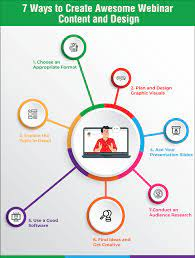
Choosing Your Webinar Topic: Focus on Your Audience’s Pain Points
When selecting your webinar topic, it’s crucial to remember your audience’s needs and pain points. In addition, your case should be relevant and timely, addressing a specific issue or challenge your audience is currently facing.
To get audience questions and help narrow down your topic, consider conducting a survey or poll before engaging webinar to gather feedback from your target audience.
This approach will generate interest and help you gain insight into their most pressing technical issues,l issues attendees’ questions, and attendees’ questions, which can be used to craft a webinar that addresses these issues head-on.
Selecting Your Webinar Format: Finding the Right Fit for Your Topic
Once you have determined your webinar topic, it’s time to select the format that best fits your content and goals. Some popular webinar formats include:
Presentation-style webinars are typically led by a single speaker and focus on educating and informing the audience on a specific topic.
Panel discussions: These webinars feature multiple speakers and provide a more diverse range of perspectives and insights.
Q&A sessions: These webinars allow for direct interaction with the audience, allowing them to ask questions and receive real-time feedback.
When selecting your webinar format, consider your audience and sales team’s preferences, your content’s complexity, and your audience-engaged sales team’s desired outcomes.
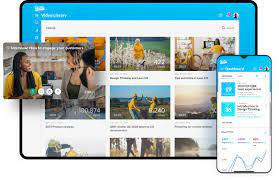
Promoting Your Webinar: Creating a Comprehensive Marketing Plan
Promotion is vital to ensuring the success of your webinar. Creating a comprehensive marketing plan for engaging webinar attendees that leverages multiple channels and touchpoints is essential to maximize webinar attendance and encourage engagement after that.
Some effective promotional tactics include:
Email marketing: Sending targeted emails to your audience, promoting the event, and providing all necessary details.
Social media marketing: Utilizing social media platforms to promote your webinar, create buzz, and encourage sharing.
Paid advertising: Running ads on search engines, social media platforms, or other relevant websites to reach a broader audience.
Influencer marketing: Partnering with industry influencers or thought leaders to promote your webinar to their audience.
Executing Your Webinar: Tips for a Flawless Presentation
The day of your webinar has arrived, and it’s time to deliver a flawless presentation. To ensure that everything goes smoothly just the beginning part, consider the following tips:
Test your equipment: Ensure your microphone, camera, and other equipment are working correctly before starting the webinar.
Practice your presentation: Rehearse your content and delivery, timing each section to ensure you stay within the allotted timeframe.
Engage with your audience: Encourage interaction and engagement throughout the webinar by asking questions, responding to comments, and providing additional resources or information.
Follow up after the webinar: Email attendees, thank them for participating, and provide additional resources or information.
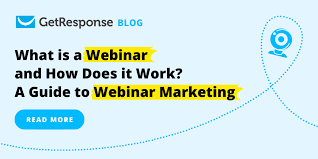
“Webinar Planning Best Practices: A Comprehensive Guide”
Are you looking to do webinars and plan and execute a successful webinar? Whether you’re a marketer, business owner, or entrepreneur, holding webinars can be a powerful tool for connecting with your audience, generating leads, and driving conversions.
But with so many moving parts involved in webinars, planning content marketing for a webinar host and executing a successful webinar can be daunting.
In this comprehensive guide to webinar software, we’ll walk you through the best practices for effective webinar planning, from identifying your goals and objectives for a virtual event to delivering a flawless presentation.
Following these steps, you can create a webinar that meets and exceeds your expectations, providing value to your audience and driving your desired outcomes.
Step 1: Identify Goals and Objectives
Before planning your webinar, you must identify your goals and objectives. What do you want to achieve with your webinar? Are you looking to generate leads, educate your audience, or promote a new product or service?
By identifying your webinar with goals and objectives upfront, you can ensure that your webinar is designed to meet your specific needs and deliver the results you’re looking for.
Step 2: Choose a Webinar Topic
Once you’ve identified your goals and objectives for engaging with webinar attendees, it’s time to choose a relevant and timely topic for your webinar. Your topic should resonate with your audience and address a specific pain point or need. It should also be timely and relevant, clearly connected to current events or trends.
Step 3: Select Webinar Format
There are many formats for creating polls hosting webinars, including life, pre-recorded, and hybrid forms interview webinars. The design you choose will depend on your goals and objectives, as well as your audience’s preferences and needs.
For example, a live webinar may be more engaging and interactive, while a pre-recorded webinar may be more convenient for your audience.
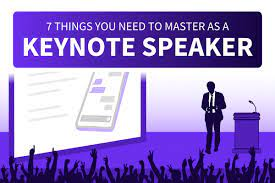
Step 4: Promote Webinar
Promoting your webinar is essential to its success. You should use a multi-channel approach to reach your target audience, including email marketing, social media, and paid advertising. You should also create a landing page for your webinar that highlights the benefits of attending a test webinar and includes a clear call to action.
Step 5: Execute Webinar
When it comes to executing your webinar, preparation is critical. You should rehearse your presentation multiple times and test your technology and equipment to ensure everything works correctly. You should engage with your audience during the live webinar and provide value through your content and presentation.
Step 6: Follow-Up and Analysis
After your webinar, following up with your attendees and analyzing your webinar’s results is essential. You should send a thank you email to your attendees and provide them with additional resources or other panel discussions that the discussion webinar offers.
In addition, tracking your metrics from attending webinars, such as attendance, engagement, and conversion rates, would be best to gauge your webinar’s success and identify improvement areas.
Planning and executing a successful webinar requires careful consideration and attention to detail. Following the best practices outlined in this guide, you can create a webinar that meets and exceeds your expectations, providing value to your various audience members and driving your desired outcomes.
Remember to focus on your goals and objectives, choose a relevant and timely topic, select the correct format, promote your webinar through multiple social media channels beforehand, and deliver a flawless presentation. Good luck!

Here are a few additional tips to help you take your webinar planning to the next level:
Please choose the right day and time:
Consider your audience and their schedules when selecting a day and time for your webinar. For example, avoid scheduling it during holidays or weekends and try to choose a time that works for your attendees in different time zones.
Collaborate with guest speakers:
Bringing in guest speakers can add value and variety to your webinar. Look for industry experts, influencers, or thought leaders who can share their knowledge and insights with your audience.
Leverage social media:
Use social media to promote your webinar and engage with your audience before, during, and after the event. For example, create a hashtag for your webinar and encourage attendees to share their thoughts and feedback.
Incorporate interactive elements:
Engage your audience with interactive features like polls, surveys, and Q&A sessions. This can help keep your attendees interested and invested in your presentation.
By incorporating these tips into your webinar planning content creation process, you can make what is a webinar how to create effective webinars into an even more engaging and valuable online seminar and experience for your audience.
Final Thoughts
Webinars effectively connect with your audience, generate high-quality leads, engage potential customers, and establish your brand as a thought leader in your industry.
By following the best practices outlined in this guide and incorporating the additional tips we’ve provided for better webinars, you can create a webinar that delivers real value to your attendees, generates high-quality leads, and helps you achieve your business goals.
Remember to remember your goals and objectives throughout the webinar tool planning process, choose a relevant and timely topic to create webinars, select the correct format for your audience, promote your webinar through multiple channels, and deliver effective webinars with flawless presentations.
With these strategies in mind, you can create a successful webinar tool for training events that sets you apart from other webinars in the competition and establishes your brand as a trusted authority in your industry.
Thank you for reading this guide on webinar planning best practices. We hope it has been helpful in your efforts to plan and execute a successful webinar. If you have any questions or would like additional support for the effective webinar, please don’t hesitate to contact us.
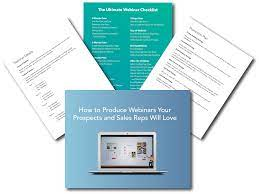
Defining Your Target Audience
The first step in creating a successful webinar is defining your target audience. Understanding your audience’s interests, preferences, and pain points is crucial in creating content that resonates with them. Market research and customer data analysis can help you gain insights into your target audience.
Choosing the Right Topic
Once you have identified your target audience, the next step is to choose the right topic. Your topic should only be relevant to your intended audience, align with your business objectives, and provide value to your attendees.
You can use keyword research tools to identify popular topics in your industry.
Selecting the Appropriate Format
Webinars can take various formats, including live, on-demand, and hybrid. Choosing the right webinar platform design depends on your audience’s preferences and business objectives.
Live webinars provide a more interactive experience, while on-demand or online webinars offer flexibility for attendees. Hybrid and online webinars combine the benefits of both formats.
Crafting a Compelling Title and Description
Your title and description are the first things that potential attendees will see. Crafting a compelling title and description is critical in attracting a broad audience.
Your title should be attention-grabbing, concise, and include your primary keyword. Your description should provide a brief overview of what attendees can expect to learn and how it can benefit them.
Creating Engaging Content
The success of your webinar depends on the quality of your content. Your webinar content should be informative, engaging, and relevant to your audience. Incorporating visual aids, such as slides and diagrams, can help you illustrate your points effectively. In addition, interactive elements like polls and Q&A sessions can increase engagement and provide valuable insights.
Promoting Your Webinar
Promoting your webinar is critical in reaching a broad audience. You can use various channels, such as social media, email marketing, and paid advertising, to promote your webinar.
Your promotion should include a title, description, and a clear call to action. Offering incentives, such as free resources and discounts, can also increase attendance.
Measuring Success
Measuring the success of your webinar is critical in evaluating its effectiveness and making improvements for future webinars.
You can measure your webinar’s success using various metrics, such as attendance, engagement, and conversion rates. Analyzing your metrics can help you identify areas for improvement and optimize your future webinars.
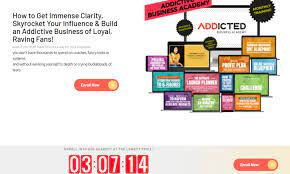
Thank you for your feedback. In addition to the strategies we have discussed panel discussion webinar, other factors can influence your webinar’s success, such as visual elements such as the timing and duration of your webinar, the quality of your audio and video content, and the expertise of your presenter.
Testing your webinar software and technology and rehearsing your webinar content before going live is essential to ensure your webinar hosts a smooth and engaging experience for your attendees.
Furthermore, following up with your webinar attendees after the webinar is essential to nurture your relationship and continue providing value to potential customers. For example, you can send a thank-you email, provide additional resources, or offer discounts on your products or services.
Creating a successful top webinar platform requires planning, execution, and evaluation. By following our strategies, you can optimize your leading webinar platform and analytics.
Do this based on your audience’s feedback and engagement with virtual events. It will stand out from the competition and drive results for your business.
Thank you for considering our guide. We hope it helps you outrank other websites and achieve your webinar goals.
CoopBusiness is a revolutionary cooperative business-building platform that empowers individuals to become entrepreneurs, business owners, and financially independent.
As a member, you’ll receive top-level business mentorship, access to our proprietary business systems, and the opportunity to access the funds you want to turn your business ideas into reality.